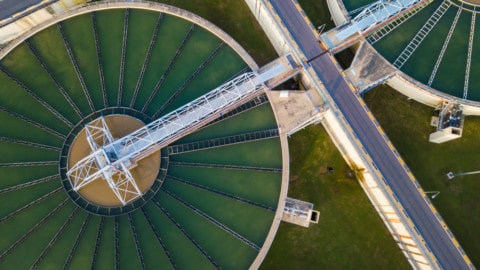By Tess Macallan, Journalist, Pump Industry Magazine
Following severe flooding in 2022, New South Wales’ Hay Shire Council began repairing a culvert that had spent months underwater and made a mammoth discovery. Council was faced with a 40m long, 15m wide chasm filled with water. Managing the impacts of the floods and draining the inundated roads has required significant resources, including a number of pumps.
In late 2022, floodwater from the Lachlan and Murrumbidgee rivers, along with months of rain, transformed the landscape of Hay Plains – one of the flattest regions in the world. Roads and properties were inundated with water, cutting off access and severely impacting the entire Hay Shire community. The region continues to experience the lingering effects of the floods.
Greg Stewart, Operations Manager, Hay Shire Council, said, “Following the floods, 20 roads were closed. “We currently have one road closed, however, all the others are operating at minimal traffic levels.” Pumps played a crucial role in managing and recovering from the floods, assisting with water control and removal. “Council had 36 pumps set up at stormwater outlets that were closed due to the high water levels at Murrumbidgee River,” Mr Stewart said.
“These pumps were monitored on shift rotations 24/7. When we experienced rainfall within the levee we had to start all the pumps in a strategic sequence to prevent flooding within the levee.
“The pumps were from a mixture of Council and local contractors and ranged from one to twelve inches depending on the catchment.”

The great chasm
Prolonged flooding resulted in the formation of a colossalsized hole around a culvert on Booligal-Gunbar Road. “Booligal-Gunbar Road has a series of large culverts underneath it through which Gum Creek runs,” Mr Stewart said.
“The culvert pipes did not have the capacity to allow this volume and flow of water to pass through and as a consequence the water breached the road along a 300m section at the creek.
“As the creek continued to rise the water spread out and began to scour a section of road outside the creek channel where there were no culverts. This part of the road became sacrificial and as the scouring continued, the water was concentrated in this area. The volume and flows were so great it carved its own path through the road.
“At this point, the only action Council could take was to shut the road.”
It wasn’t until two months later, after the water had receded, that Council was able to build an earth bank on each side of the road to block the flow and allow pumping of the water. At the time, the depth of the washout was unknown.
“Initially, Council had two three-inch pumps sent to site to move the water and allow repairs to take place,” Mr Stewart said.
“It soon became a reality the hole was greater than expected and two more four-inch pumps were deployed to assist. After three days of pumping, we could see the floor of the washout.
“Council was also required to import fill material from a borrow pit 10km from the washout site, to replace the lost material. A combination of Contractor and Council plants won and imported the fill material. This work took six to eight days to complete as the washout was built up in 300mm compacted layers.”

Under the pump
Mr Stewart said the work was challenging due to the fact there was only enough space for one truck to access the washout at any given time. “This didn’t impact the scope of the works, it just took longer given the size of the hole.” Another challenge was finding enough earthmoving plant to undertake the work.
“Most Councils and farmers were faced with similar issues and we were all competing for the same earthmoving equipment,” Mr Stewart said. “We were fortunate enough to partner with a mixture of local contractors and Council resources.” Council is currently faced with another large washout in the west of the LGA.
“Access to this road has only been available the last two weeks,” Mr Stewart said. “We are repairing this washout similarly to the BooligalGunbar washout. Pumps are yet to be sent to remove the water and it is expected we will send out three four-inch pumps.”
Mr Stewart said Council has been fortunate to have active contractors and suppliers willing to assist during this time and provide pumps and fittings given the demand across New South Wales.
As extreme weather events grow more frequent due to climate change, parts of Australia will face an increase in severe flood events, necessitating the use of pumps for water management and flood recovery.


















